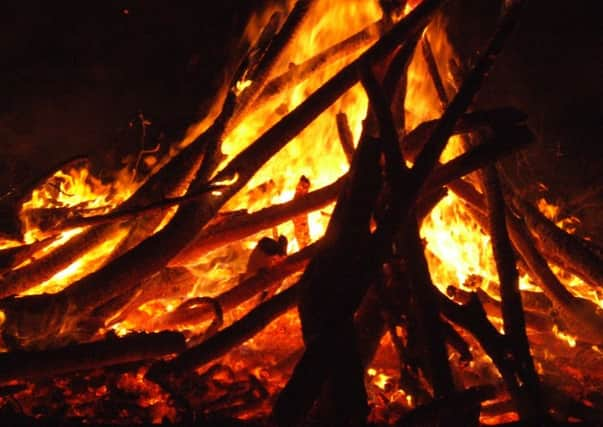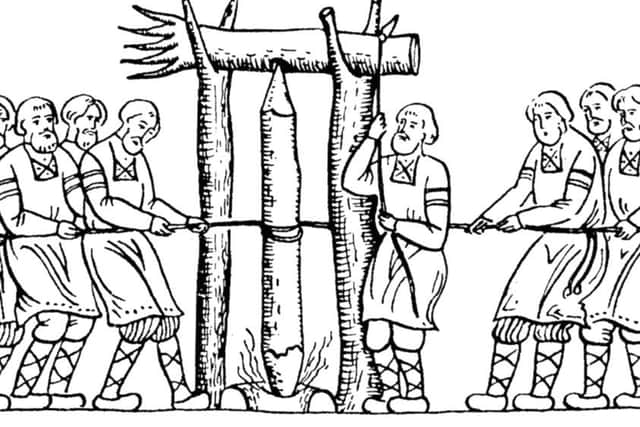The ancient fires lit across Scotland for good fortune


Lighting a needfire could involve up to 81 men with the ritual practised in some parts of the Highlands until at least the first half of the 19th Century.
The fire was lit using two pieces of wood and friction and its most basic form, two sticks - one pointed and one bored with a hole - were used.
Advertisement
Hide Ad

The pointed stick was placed in the hole of the other, set on the ground, and twisted rapidly by the fire maker until a spark was produced.
The ritual, which was also conducted throughout Europe and Russia, often became more elaborate, with ropes, axls and wheels used to summon the spark.
The needfires were particularly prevalent when cattle were attacked by an illness said to have been conjured by a demon or a witch.
A family’s beasts, the source of health and wealth, were thought of as being particularly vulnerable to malevolent forces.
Needfires were also lit to ensure the safety and success of a boat during the fishing season, according to some accounts.
James Frazer in his classic text The Golden Bough, said a cart wheel or spinning wheel was used to up the friction during the ritual.
Advertisement
Hide AdIn Aberdeenshire, this was called the ‘muckle wheel’ and in Mull the wheel was turned from east to west over nine spindles of oak wood.
In the Western Isles, the fire was kindled by 81 married men, who rubbed two great planks against each other, working in relays of nine.
Advertisement
Hide AdIn North Uist, the nine groups of nine men who made the fire were all first born sons, Frazer added.
J McPherson, in his text Primitive Beliefs in the North East of Scotland, added: “The employment of 81 married men in a rural community shows the tremendous significance attached to the fire church, when put into operation because of some great calamity.”
To ensure success of the needfire, various conditions had to be observed, according to McPherson.
All fires in the neighbourhood had to be extinguished before a new fire was raised. Sometimes the neighbourhood was measured as all the land between two streams.
In some cases, it covered every house in sight of the needfire.
In 1767, an effort was made to kindle the needfire on Mull but all efforts failed to bring on the flame.
Advertisement
Hide AdIt was found that one householder did not allow his fire to be extinguished given his dislike of the ritual.
His servants were bribed and next morning his hearth was cold - and the need-fire successfully lit.
Advertisement
Hide AdMcPherson wrote that cattle were driven through the embers of the needfire two or three times in a certain order in order to eliminate disease.
After all the cattle had gone through the fire, each householder took home a flaming stick to light their home hearth.
The Church later stripped the ancient needfire from the countryside and judged it to be a heathenish practice.
In 1649 , the Synod of Moray rules that raisers of needfire in the Presbytery of Strathbogie had to wear the sackcloth for three days.
Folklorist Alexander Carmichael noted the needfire was made in North Uist up until around 1829, in Arran until 1820, in Helmsdale about 1818 and in Reay until about 1830.
